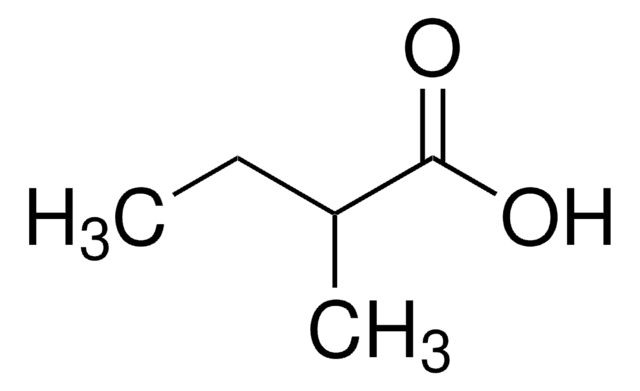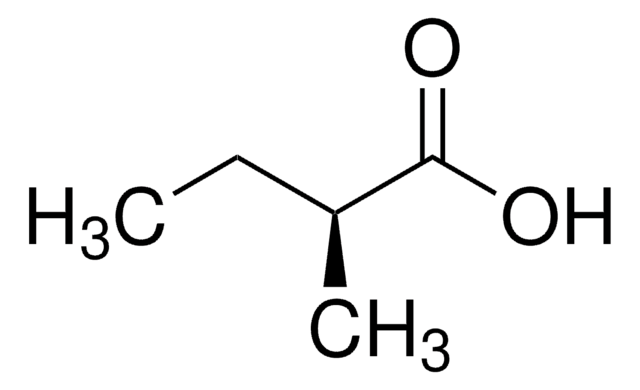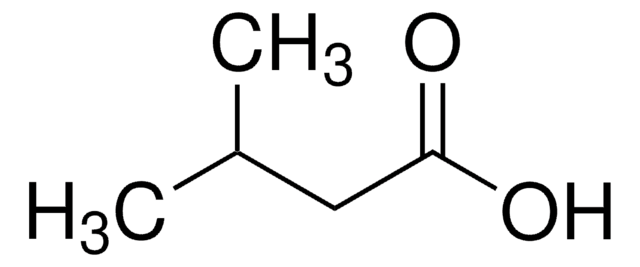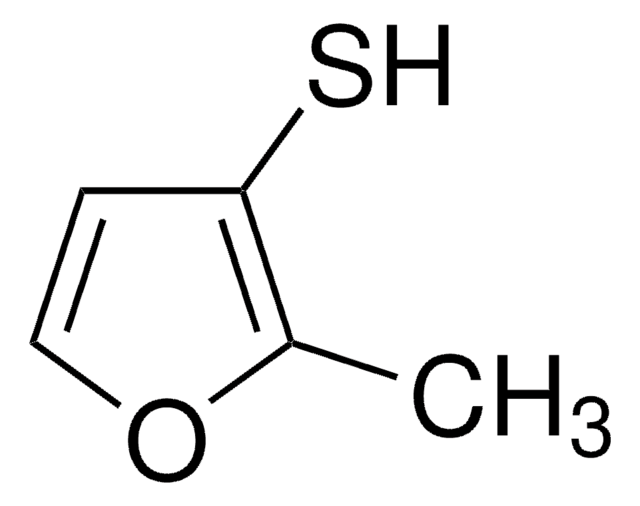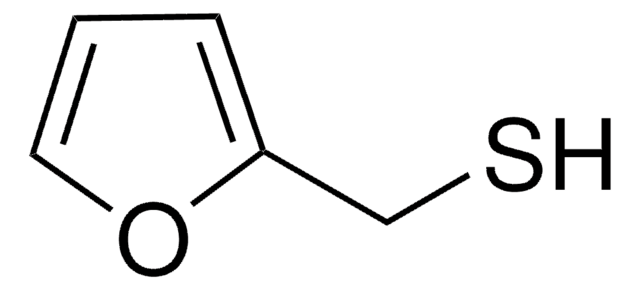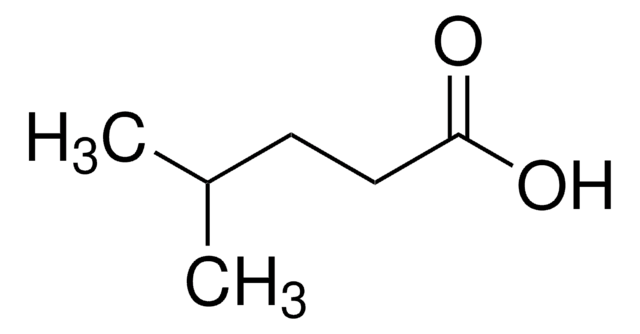W269506
2-Methylbutyric acid
≥98%, FG
Synonym(s):
NSC 7304
About This Item
Fragrance grade
Halal
Kosher
Recommended Products
biological source
synthetic
Quality Level
grade
FG
Fragrance grade
Halal
Kosher
Agency
follows IFRA guidelines
meets purity specifications of JECFA
reg. compliance
EU Regulation 1223/2009
EU Regulation 1334/2008 & 178/2002
FDA 21 CFR 172.515
vapor pressure
0.5 mmHg ( 20 °C)
Assay
≥98%
refractive index
n20/D 1.405 (lit.)
bp
176-177 °C (lit.)
density
0.936 g/mL at 25 °C (lit.)
application(s)
flavors and fragrances
Documentation
see Safety & Documentation for available documents
food allergen
no known allergens
fragrance allergen
no known allergens
Organoleptic
cheesy; acidic; fruity
SMILES string
CCC(C)C(O)=O
InChI
1S/C5H10O2/c1-3-4(2)5(6)7/h4H,3H2,1-2H3,(H,6,7)
InChI key
WLAMNBDJUVNPJU-UHFFFAOYSA-N
Looking for similar products? Visit Product Comparison Guide
Related Categories
Application
- Detection of Maize Mold Based on a Nanocomposite Colorimetric Sensor Array under Different Substrates.: This study focuses on the application of (±)-2-Methylbutyric acid in the development of nanocomposite colorimetric sensor arrays, facilitating the rapid detection of mold in maize. This advancement highlights the compound′s potential in agricultural quality control and food safety (Lin et al., 2024).
- Regulation mechanism and bioactivity characteristic of surfactin homologues with C14 and C15 fatty acid chains.: Research elaborates on the bioactive characteristics of surfactin homologues involving (±)-2-Methylbutyric acid, underscoring its crucial role in enhancing the microbial production of bioactive compounds. This has significant implications for pharmaceuticals and bioengineering (Su et al., 2024).
- Multifaceted analysis of the effects of roasting conditions on the flavor of fragrant Camellia oleifera Abel. seed oil.: This paper explores how (±)-2-Methylbutyric acid influences the flavor profile of Camellia oleifera seed oil under various roasting conditions, emphasizing its importance in enhancing food flavors and consumer products (Han et al., 2024).
Biochem/physiol Actions
Other Notes
Signal Word
Danger
Hazard Statements
Precautionary Statements
Hazard Classifications
Acute Tox. 4 Dermal - Acute Tox. 4 Oral - Eye Dam. 1 - Met. Corr. 1 - Skin Corr. 1B
Storage Class Code
8A - Combustible corrosive hazardous materials
WGK
WGK 1
Flash Point(F)
170.6 °F - closed cup
Flash Point(C)
77 °C - closed cup
Personal Protective Equipment
Choose from one of the most recent versions:
Already Own This Product?
Find documentation for the products that you have recently purchased in the Document Library.
Customers Also Viewed
Our team of scientists has experience in all areas of research including Life Science, Material Science, Chemical Synthesis, Chromatography, Analytical and many others.
Contact Technical Service